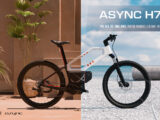
Getting to Know Your E-bikes Battery
February 14, 2023Today most Electric Bikes use Lithium-ion batteries they have for the most part replaced the lead batteries used in recent years. There is a range of chemistry used in lithium-ion batteries but the best chemistries for electric bicycles are lithium iron phosphate (LiFePO4) and lithium manganese. LiFePO4 has advantages of being the safest and longest lasting, while LiMn has a higher power-to-weight ratio and also a very high life time.
It is important to use a lithium-ion battery designed for an electric bike as they have battery management systems inside them to limit excessive discharge, control maximum discharge rate and balance charge between cells when charging.
Lithium-ion batteries must be specifically designed due to the presence of a battery management system (BMS) within the pack. This piece of circuitry must be set appropriately to control the amount of current draw required by the motor and to limit excessive discharge capacity. The BMS is also important for balancing cell charge between the individual cells within the battery to maintain battery life over time
Not all batteries are created equal even though the voltage and Amp hour ratings are. So what does the C rating on a battery mean? the C stands for capacity. The C rating is the maximum safe continuous discharge rate of a battery pack. If you see 2C on your battery, it means it can be discharged at 2 times that pack’s capacity. Capacity refers to the Amp-hour rating of the battery.
Calculating a battery’s capacity. Here’s an example, using a 10Ah 5C rated battery. 10Ah – 5C. 10 Amps (Ah capacity) x 5 (C-rating) = 50 amps continuous discharge. This means that you can safely draw up to 50 amps continuously from that 36V 10Ah 5C battery without doing damage to your battery.
Though often more expensive than the lower-grade lithium chemical compounds that can be sourced from China and other areas, some cell manufacturers sources its raw materials from Japanese suppliers, the best in the world. This pays off in overall higher quality control, cell stability, and safety in the end products.









